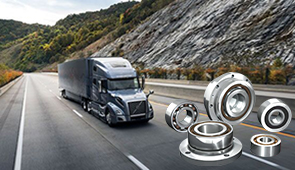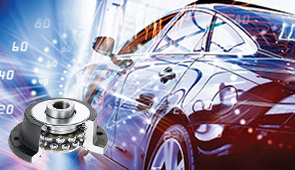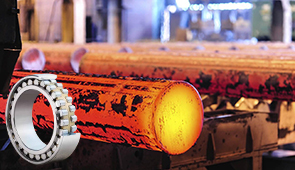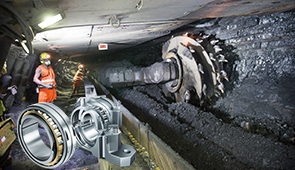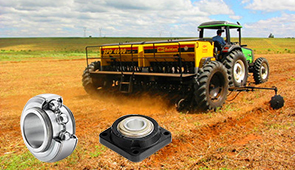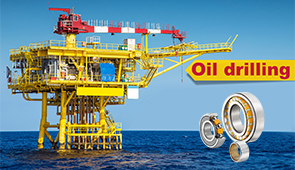Top Reasons Why Bearings Fail and How to Prevent Bearing Damage
Bearings are a critical component in countless mechanical systems, ensuring smooth motion and reducing friction in applications ranging from industrial machinery to automotive engines. However, when bearings fail, the consequences can be costly and disruptive, often leading to equipment downtime, unexpected repair expenses, and potential safety hazards. Understanding the key causes of bearing failure is essential for maintaining optimal system performance and longevity. This article explores the most common reasons behind bearing damage, such as contamination, improper lubrication, and misalignment, and provides actionable strategies to prevent these issues. By implementing proper maintenance practices and addressing underlying causes, you can significantly extend the lifespan of your bearings and enhance the efficiency of your operations.
How Does Improper Lubrication Cause Bearing Damage?
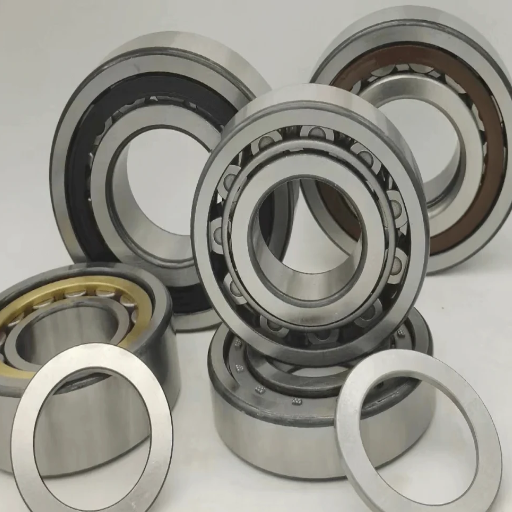
The Importance of Proper Lubrication for Bearing Longevity
Bearings require adequate lubrication if they are to perform up to their specifications and for a fair lifespan. Lubricants reduce friction between the rolling elements and the bearing surfaces and thereby minimize wear on the bearing. Dependent on friction forces, heat can build in the bearing, and thus heat can deteriorate surface properties and material properties, and in extreme cases, can lead to premature failure. Research studies reveal that about 50% of bearing failures are the result of lubrication-related problems; this indeed stresses the important role of maintenance.
Lubrication failures take various forms; one common mistake is using the wrong lubricant, applying insufficient quantities, or never replacing made-in-lubricants with fresh ones as time goes by. For example, using a lubricant unsuitable for the working environment, such as one inappropriate for the operating temperatures, can lessen its protective strength. On the other hand, over-lubrication or pushing in grease faster than it can escape might lead to excessive grease levels, higher operating temperatures, and even restricted bearing movements; under-lubrication, conversely, may not sufficiently lessen friction. As such, a well-crafted lubrication scheme must be applied, keeping in mind the specific conditions of the equipment.
Additionally, a good lubrication scheme stops any external contaminants from entering the bearing. The lubricant prevents particles, moisture, or any other forms of pollutants from settling in the bearing. Therefore, setting up a maintenance schedule will help check the lubricant’s condition and top it up accordingly to maintain bearing efficiency and reliability. Successful application of these maintenance practices reduces downtime, enhances machine performance, and, eventually, opens up the avenue to maximize operational longevity itself.
Effects of Lubrication Failure on Bearings
Bearing lubrication failure can lead to grave operational problems with increased friction and wear put in the forefront. If lubrication is inadequate, then it cannot develop a film between the rolling elements; hence, metal-to-metal contact occurs. This friction creates high amounts of heat, accelerates wearing processes, and produces material degradation, resulting in an almost immediate decrease in the bearing service life.
Corrosion is deemed one of the paramount hindrances to lubrication. When lubrication runs off or becomes diluted with contaminants, moisture and contaminants attack the bearing, giving rise to rusting and pitting of bearing surfaces. These surface defects proceed to worsen wear and further compromise the performance of a bearing, drawing misalignment and instability into machinery.
Another major repercussion of the plight is vibration and noise within the mechanical system. A greater degree of surface roughness comes to be when the lubrication is not adequate, leading to irregularity in the operation of the bearing. Consequently, a stark amplification of vibration patterns and noise levels is experienced kind of effect that will prove injurious to neighboring components and structures. The antidote calls for immediate diagnosis and replenishment with the proper type of lubricant, followed by strict adherence to executive lubrication policy.
Choosing the Right Lubricant to Prevent Damage
Selection of a lubricant is critical for the efficiency and longevity of mechanical systems. The lubricants should be selected according to the working temperature, loading conditions, required speeds, and environmental exposure. For instance, high-temperature environments require lubricants with high thermal stabilizing properties, while heavily loaded machinery must allow a high viscosity to adequately maintain film strength and prevent wear.
Lubricants should always be chosen as per the specifications and guidelines of the equipment manufacturer. These guidelines should describe exactly what to use, including the viscosity grade and whether a grease or oil-based lubricant is appropriate. Lubricants with additives targeted to a particular set of operational needs can further improve protection and performance-including measures for anti-corrosion, anti-wear, or extreme-pressure requirements.
However, the operating environment should be taken into consideration when choosing lubricants. If the machinery is subject to contamination and water ingress, the lubricant should ensure sufficient resistance to water and sealing. Synthetic lubricants may just be the best choice in such extreme conditions since they typically provide greater durability and compatibility across a wider operating range when compared to mineral-based lubricants. By monitoring these considerations on an ongoing basis and adjusting lubrication accordingly, premature wear can be prevented, and maintenance costs reduced while maximizing system reliability.
Why is Misalignment a Major Issue in Bearing Failures?
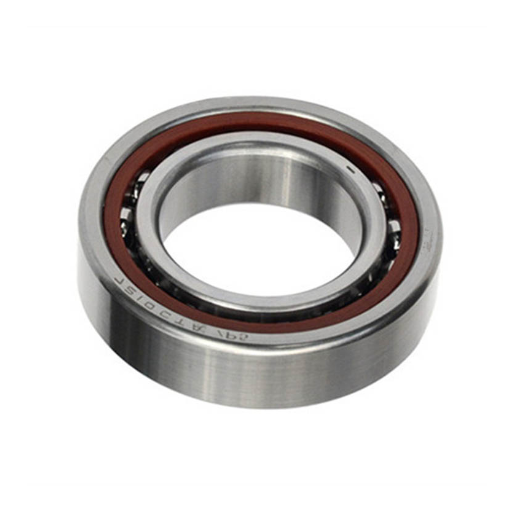
Identifying Signs of Misalignment in Bearings
Misalignment within bearings will dramatically stress operational capabilities and provoke premature failure. Misalignment occurs when the shaft and the housing component centerlines are not properly aligned. To avoid costly breakdowns and days of downtime, perhaps a few signs can be checked by operators and technicians:
- Abnormal Noise or Vibration: If misalignment exists, it is often accompanied by irregular vibrations or noise with high-frequency sounds, such as squealing, grinding, or rumbling. Usually, these vibrations result in bearing strain due to uneven load distribution.
- Uneven or Accelerated Wear: Misaligned bearings often show uneven wear patterns either on the rolling elements or the raceways. Scuffing and spalling indicate heavy localized loading on the bearing.
- Excessive Heat Generation: Slight misalignment would increase friction inside the bearing assembly, causing a rise in temperature during operation. This exceeding temperature frequently becomes unfavorable for the breakdown of lubricant, hence impairing further lubrication.
- Lower Efficiency and Performance: Load capacity in the bearing significantly drops when misalignment occurs, of course, affects equipment performance and increases the probability of mechanical instability.
Constant inspections with modern techniques such as vibration analysis, thermography, and laser alignment tools can keep the early detection and quantification of misalignment problems in check. With this, timely adjustments shall render the bearing life enhancement and with better reliability of the entire machine.
How Shaft Misalignment Leads to Bearing Damage
The shaft misalignment is a leading cause of bearing failure. When the rotational centerlines of the shafts being coupled are not properly aligned, misalignment arises in two general categories—angular and parallel. In angular misalignment, the shafts intersect at an angle, while in parallel misalignment, the shafts are parallel but offset. Both put excessive stress on the bearings, leading to uneven load distributions between the bearings’ rolling elements and raceways.
Persisting misalignments cause abnormal forces and vibration, and these accelerate wear patterns such as fretting, spalling, and brinelling on the bearing components. These also increase friction due to increased localized heating, thus degrading lubrication and speeding up material fatigue. Dynamic mechanical studies have shown that even a slight misalignment of about 1 degree has an exponential effect in increasing radial and axial load on bearings, now reducing bearing life immensely.
Using state-of-the-art diagnostics with real-time vibration monitoring, it has been demonstrated that misaligned shafts produce very specific vibration signatures, including increased harmonic frequency and axial peaks. Thermal imaging then corroborates that the zones corresponding to misalignment are, in fact, hot spots on the machinery, signaling inefficiency. Correcting shaft alignment accurately by using laser alignment systems can result in an energy saving of about 10% and can double the bearing life. Data such as this demonstrates the significance of precision alignment when it comes to reducing bearing damage and preserving the integrity of machinery.
Techniques for Correcting Misalignment Problems
A misalignment correction problem calls for a methodical approach based on precision engineering techniques and advanced diagnostic tools. Defining laser alignment systems with traditional instruments like dial indicators remains an excellent method for high-precision measurement of misalignment by iterating parallel or angular deviations using a laser beam. This system highly restricts human error while giving adjustment tolerances down to 0.001 inches in extreme precision cases. Dial indicators also play an important role in simple misalignment problems. When used correctly with a strict rim and face or reverse dial method, the dial indicator can be relied upon for setting the exact alignment of axes.
Thermal growth should be taken into consideration when one is working on machinery equipment under higher temperature conditions. This allows the shift of expansion to be taken into account so that post-operation, the effect of alignment can be minimised. Vibrational analysis is, therefore, used to detect abnormalities in operating frequencies, which usually relate to misalignment.
Lastly, condition-based monitoring systems can utilise real-time data from sensors to detect misalignment and allow early rectification, thereby preventing any downtime. The implementation of such technological means, with the right training and the adoption of maintenance best practices, assures efficient operation and extends the life of the machines.
What are the Effects of overheating on Bearings?
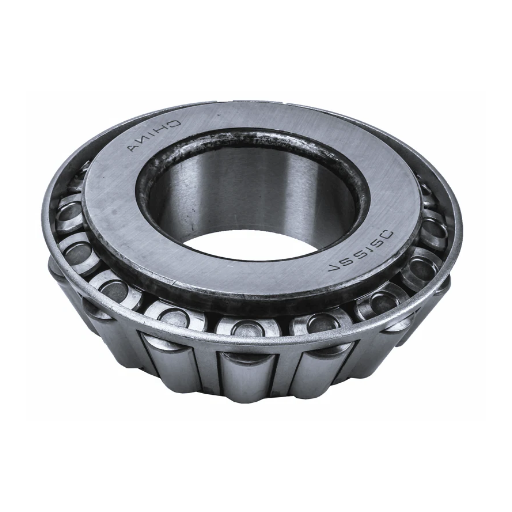
Recognizing Symptoms of Overheating in Bearings
Overheating in bearings is a critical issue that may culminate in immediate catastrophic equipment failure if not dealt with in time. Some signs of heating and overheating are the discoloration of bearing parts, with colors ranging from dark browns to bluish tints, caused either due to the oxidation of the lubricant or heat damage to the metal surfaces involved. Noise generation is the first symptom, followed by vibration and the smell of burning. The heat is abnormally produced due to lubrication inadequacy, overloading, or contamination.
Advanced monitoring tools such as infrared thermography and vibration analysis can be very useful in detecting an abnormal rise in temperature and the incipient failure of free bearings. Research data show that when a bearing operates at a temperature above its design limit range, the service life is severely reduced and sometimes goes down to as low as 50 percent for every 50°F (10°C) above recommended levels. High temperatures may cause the lubricant to become less viscous; hence, its capability to minimize friction is reduced, thus accelerating wear.
Immediate treatment of overheating should involve seeking out root causes and then eliminating these causes; common reasons for such failures are ineffective lubrication, excessive speeds, and misalignment.
Prevention Strategies for Overheating
Hence, to prevent the overheating of bearings, a series of preventive measures must be undertaken to ensure the reliability of the equipment and to give it a longer life span. One of the main measures includes proper lubrication using lubricant types (grease or oil) suggested by the manufacturer and following the application intervals, since improper or a lack of lubrication is one of the main causes of overheating. Operating conditions must continually be monitored for factors such as loads, speeds, and environmental temperatures so that any alterations leveling elements against its temperature pass beyond acceptable limits remain the first to be identified.
Further, misalignment during installation can be a great source of heat generation if, for instance, a misaligned shaft or housing results in uneven forces that create friction. Also, it is good practice to check well to remove any possible debris, dust, or contaminant as these might interfere with the intended clearances and hence cause abrasive wear. More advanced monitoring methods, such as infrared thermography or vibration analysis, provide operators with an early warning of any heat build-up so that failure can be averted.
Heat-demanding environments call for special materials or coatings that may perhaps offer that extra level of thermal resilience-cum-bearing ability – ceramic bearings or heat-resistant lubricants good example of this. They may also provide some way to cool the equipment-fan systems, heat sinks, or novel airflow designs to help carry away the unwanted heat. One way or another, bearing performance should be maintained at its highest level, and risk suppression against bearing overheating should exist.
Impact of Operating Temperature on Bearing Life
It is obvious that temperature determines how long bearings can last and their performance. Excessive temperature results in material degradation, thermal expansion, and accelerated lubricant breakdown, potentially hindering the ability to provide smooth working friction and protection against wear.
- Material Degradation: In high temperatures and extended exposure, the structural integrity of bearing materials like steel and ceramic may weaken. Steel begins to lose strength and hardness at 250°F (121°C), and therefore could fail prematurely.
- Lubricant Breakdown: Most lubricants have an upper limit of heat tolerance, with the common ones boiling around 212°F (100°C). Crossing such limits causes oxidation, evaporation, or viscosity modulation at which points the lubricant can no longer perform its function well and wears out the surfaces it should not have been worn.
- Thermal Expansion: The bearings are designed with clearance tolerance under consideration. At elevated temperatures, different constituents expand unevenly, resulting in decreased clearance, thereby increasing friction, causing eventual seizure of the bearings.
- Reduced Fatigue Life: Bearings operating at higher temperatures show a lower fatigue life, largely due to material degradation and lubricant breakdown. It has been estimated by test evaluation that every 50°F (28°C) increase above the permitted operating temperature could reduce bearing fatigue life by 50%.
- Corrosion Acceleration: High temperatures can also accelerate chemical reactions between bearing materials and environmental factors like oxygen and moisture. This accelerates oxidation or rust formation, further hampering performance and service life.
Understanding these temperature-related impacts and taking measures against them certainly helps operators guarantee and lengthen the life of bearings, even under tough working conditions.
How Can Corrosion Affect Bearing Performance?
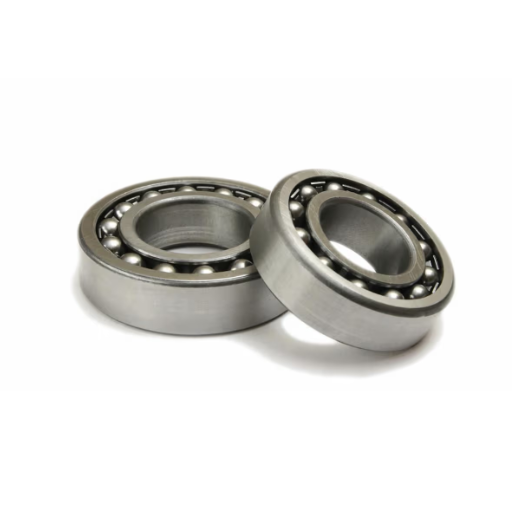
Causes of Corrosion in Bearings
Corrosive problems in bearings are essentially brought about by the interaction of environmental and operational factors, which make the bearing materials susceptible to harmful elements. A principal cause is said to be the presence of moisture or water contamination in the operating environment. Water manages to get into the lubricant or onto the surfaces of the bearing and reacts with metal to form oxides-corrode, rust, and cause pit damages that develop over time. This problem is magnified by high ambient humidity or operation in coastal zones due to the high moisture content in the air.
Another big cause of corrosion is corrosive contamination by chemical substances, salts, or acids that may originate from the surrounding environment or industrial processing. They accelerate the removal of any protective coatings or layers remaining on the bearing material, thus exposing them to further damage. Bearing corrosion may also be aggravated by the use of incompatible lubricants or degraded lubricants that cannot offer any protection against various environmental factors.
Electrochemical reactions may create corrosion in bearings composed of different metals. When such metallic elements of different electrochemical potentials come in contact in the presence of an electrolyte, usually moisture, one acts as an anode and corrodes faster than otherwise.
Moreover, operating conditions like exposure to extreme temperatures over extended periods of time, vibration, and lack of maintenance further facilitate the induction of corrosion. These factors degrade protective films or lubricants that are supposed to stay intact and offer protection from corrosion, which then exposes the bearing surfaces to corrosion attack. A sound understanding of these causes provides a basis for preventive measures consisting of stringent maintenance practices, appropriate selection of corrosion-resistant materials, and application-specific lubrication schemes.
Preventive Measures Against Corrosion
Guarding against corrosion starts with analyzing the environmental factors and those arising from the materials that generate the time-evolving process. Having a very good maintenance schedule for regular inspections, prompt renewals of coatings, and noticing early signs of abrasion are all activities that practically reduce possible incidents of corrosion. Instead, application of newer materials such as stainless steel or even duplex alloys having protective reactive coatings or coatings that can withstand the rigors of a very oxidizing environment and chemical exposure will present a longer life for harsh conditions.
Corrosion can be actively defended against by systems of cathodic protection via sacrificial anodes or through impressed current protection, also of importance for infrastructure in contact with soil or seawater. Lubrication plays a vital role here to protect moving parts from moisture ingress. In industries associated with a corrosive environment, predictive maintenance supported by IoT sensors and analytics helps with real-time monitoring of asset performance that enables intervention before defects become severe.
An attempt should be made to accurately classify the environment concerning humidity, salinity, and temperature fluctuation, and adapt the fixed solution accordingly. These measures thus combine in detail to help avoid corrosion via a data-driven approach and consequently cause fewer scalability instances and a longer life for mechanical systems and structures, respectively.
Repair Techniques for Corroded Bearings
Typically, the restoration of corroded bearings combines surface treatment, precision machining, and the application of protective coating. The first stage involves a thorough inspection to determine the extent of corrosion damage. Sometimes, the corrosion causes subsurface defects, which may be detected by ultrasonic or dye penetrant inspection methods.
Once the damage is located, the surface restoration entails cleaning the bearing with abrasives or chemicals to remove rust and other contaminants. In more severe cases, the damaged material may be removed by precision grinding or turning. Finally, upon restoring the surface geometry, the application of protective coatings, ranging from anticorrosive plating (zinc, chromium) to special polymer-based sealants, is recommended to protect the bearing from further exposure to corrosive environments.
In addition, where high humidity or aggressive chemicals abound, the synergistic action of advanced lubricants containing corrosion inhibitors will remarkably lessen wear and prolong the operating life of restored bearings. Utilizing such systematic repair methods combined with predictive maintenance through digital monitoring allows the industry to avoid the recurrence of corrosion, assure reliability, and prolong the life of critical mechanical components.
What is the Importance of Correct Bearing Installation?
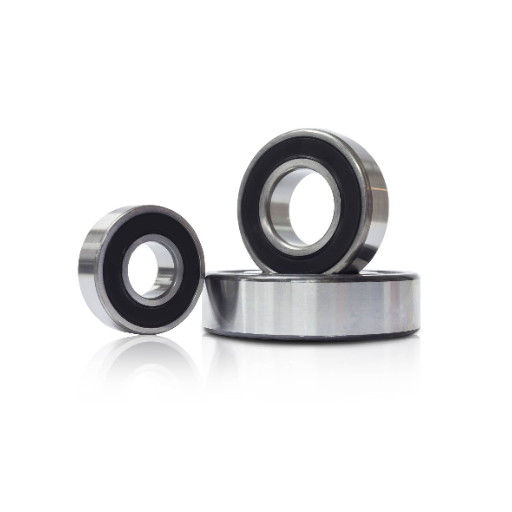
Steps for Proper Bearing Installation
- Inspection of Shaft and Housing
Before bearing installation, thus, it is necessary to thoroughly inspect the shaft and housing for any wear, corrosion, or contamination. These surfaces need to be within the tolerance specified and finished by engineering standards to allow a proper fit and alignment; otherwise, premature failures can be expected.
- Selection of Installation Tools
Use only those bearing-installation tools that are hydraulic presses, bearing heaters, or special mounting kits. The use of unsuitable tools can apply uneven forces upon the components of the bearing and cause internal damage.
- Cleaning the Components
Cleaning of all the components must be ensured before installation: bearing, shaft, and housing. Any contamination could abrade materials and age a bearing prematurely.
- Ensuring Proper Lubrication
Proper lubrication must be applied with the correct type and quantity before and after installation. Insufficient lubrication, or an excess thereof, will cause an increase in friction, heat, and wear.
- Controlled Heating or Cooling
Heat-and-cool techniques provide options for interference fit applications; controlled heating of the bearing or controlled cooling of the shaft using bearing induction heaters or liquid nitrogen should allow for fitment without forcibly pressing the bearing.
- Correct Mounting Procedures
Align the bearing carefully with the shaft or housing while applying even and gradual pressure during installation. While considering installation using a hydraulic nut or via a similar professional method, it allows for the precise mounting of cylindrical or spherical bearings.
- Post-Installation Inspection
A thorough inspection must follow the installation. Set it to check for alignment, clearances, engagement of the operation, check possible sources of misalignment, or stress that will affect the actual operation.
Bearing installation, as per the above methods, will give industries a maximum lifespan and better performance, and false installation errors and alignment will be kept under the critical engineering standards.
Common Mistakes During Bearing Installation
The improper installation of bearings leads to malfunctions and increased maintenance costs. Here, common errors made during bearing installation and their consequences are summarized:
- Applying Excessive Force: Excessive force, especially hammering or using improper tools, damages the surface of the bearing components. This surface damage further increases premature failure risks by affecting bearing geometry and internal clearances.
- Contamination During Handling: Bearings are highly contaminant-sensitive, and handling without care introduces contaminants such as dust, dirt, or metal fragments into the inner workings. This contamination wears down the bearing, causing friction and an increase in temperature during operation.
- Improper Mounting Techniques: Not following proper mounting techniques, including using the specified fits and tolerances, may cause misalignment and uneven load distribution, thereby adversely affecting service life and mechanical efficiency.
- Ignoring Manufacturer Specifications: If manufacturer guidelines are ignored—like using improper lubricants, wrong preload, or ignoring recommended tools—optimally performing installation is rarely achieved, with warranty on installations being automatically canceled.
- Insufficient Lubrication: Improper lubrication, such as from the over- or under-application of lubricants or by the use of incompatible ones, causes excessive friction and heat. Lubrication accounts for around 36% of premature bearing failures worldwide.
- Unfit Storage Conditions: Bearings kept in unfit environments, such as those with high humidity or extreme temperatures, corrode and perform poorly while still waiting for installation.
If such common mistakes can be spotted and taken care of, industries stand at a much greater chance of improving their operating efficiencies, reducing downtime, and drastically extending the operational life of their bearing systems.
Tools Required for Mounting Bearings Correctly
The use of specialized tools and exact methods is key in bearing mounting to make sure the bearings are correctly installed and to avoid premature bearing failure. However, the mounting work usually requires several tools such as:
- Bearing Heater: Induction heaters allow the bearings to expand thermally in a controlled manner so that an interference fit can be created without actually damaging the bearing or any related component. Temperature has to be accurately monitored to avoid overheating, which damages the bearing in a metallurgical way.
- Mounting Tools and Kits: These special mounting kits are meant for interference fits. They contain different sleeves, impact rings, and impact plates that distribute mounting forces evenly. They keep the forces from being wrongly transferred onto bearing races or rolling elements and force them to be applied only onto the correct surfaces.
- Hydraulic Press or Hydraulic Nut: The hydraulic press or nuts are for applying force on an eligible bearing, positioning it properly without stresses that can induce premature failure.
- Torque Wrenches: It is very important to apply the correct tightening on bolts or locknuts during mounting to maintain assembly integrity. Torque wrenches allow the application of actual torque values as recommended by the manufacturer, so this method can eliminate under-tightening or over-tightening.
- Grease Applicators and Lubrication Tools: During the mounting operation, proper lubrication has to be applied to reduce friction and to guarantee the mounting reliability. Dedicated grease applicators guarantee an even distribution of the specified lubricant.
- Measuring Instruments: Micrometers, calipers, dial gauges, etc., are used for checking and keeping control of dimensions and alignment. Precise measurement serves in confirming bearing seats and shafts to tolerances as per the manufacturer’s specifications.
Their use sees the mounting job performed smoothly and without error, additionally providing bearing systems with long-term performance and reliability. It is fitting that, paralleling the right tools, proper training should be provided, and the guidelines followed as recommended.
Frequently Asked Questions (FAQ)
Q: What are the top reasons why bearings fail?
A: Bearings often fail due to inadequate lubrication, improper mounting, excessive loads, and excessive vibration. Other common reasons include contamination, improper sealing, and wear and fatigue of the races and rolling elements.
Q: How can improper mounting lead to bearing damage?
A: Improper mounting is a frequent cause of bearing issues. When bearings are mounted improperly, it often results in misalignment, increased stress, and premature failure. Using the correct tools and techniques during installation can prevent these problems.
Q: What role does lubrication play in bearing performance?
A: Lubrication is crucial for preventing bearing failures. Inadequate lubrication can cause excessive wear and overheating, leading to failure. It’s essential to use the right amount of lubricant and ensure regular maintenance to maintain optimal bearing performance.
Q: What are the common types of bearing failures?
A: Common types of bearing failures include spalling, where material is broken at the contact surfaces; excessive wear of races and rolling elements; and runout problems due to increased radial clearance or deformation.
Q: How can excessive loads affect bearings?
A: Excessive loads can lead to an increase in stress within the bearing, causing premature failure. This is often the result of incorrect equipment design or unexpected operational conditions. Ensuring proper load calculations can help prevent these issues.
Q: What is the impact of contamination on bearings?
A: Contamination can cause rust and other damage within the bearing. Uncovered bearings are especially susceptible to contaminants, which can lead to increased friction, excessive wear, and ultimately, failure. Sealed bearings offer better protection against contamination.
Q: How can failure analysis help in troubleshooting bearing problems?
A: Failure analysis is a crucial part of troubleshooting, as it helps identify the exact cause of a failure. By examining failed bearings, engineers can determine whether the issue was due to improper lubrication, excessive loads, or other factors, and then implement the right preventative measures.
Q: What are some preventative measures to avoid bearing failure?
A: Preventative measures include regular maintenance, ensuring proper lubrication, using the correct mounting techniques, and avoiding excessive loads. Implementing these practices can significantly reduce the risk of bearing failure and extend the life of the bearings.
Q: How do common types of bearings, such as ball bearings, differ in their failure modes?
A: Different types of bearings, like ball bearings, have unique failure modes. Ball bearings often experience spalling and excessive wear due to improper loads or inadequate lubrication. Understanding these differences is essential for effective bearing repair and maintenance.
Q: What are the benefits of using sealed bearings?
A: Sealed bearings provide better protection against contamination and help maintain the proper amount of lubricant within the bearing. This can reduce the likelihood of rust and excessive wear, thereby preventing premature failure and extending bearing life.
UCTH213-40J-300 with Setscrew(inch)
CNSORDERNO: Normal-duty(2)
TOGN: UCTH213-40J-300
SDI: B-R1/8
SD: 2 1/2
UCTH212-39J-300 with Setscrew(inch)
CNSORDERNO: Normal-duty(2)
TOGN: UCTH212-39J-300
SDI: B-R1/8
SD: 2 7/16
UCTH212-38J-300 with Setscrew(inch)
CNSORDERNO: Normal-duty(2)
TOGN: UCTH212-38J-300
SDI: B-R1/8
SD: 2 3/8
UCTH212-36J-300 with Setscrew(inch)
CNSORDERNO: Normal-duty(2)
TOGN: UCTH212-36J-300
SDI: B-R1/8
SD: 2 1/4
UCTH211-35J-300 with Setscrew(inch)
CNSORDERNO: Normal-duty(2)
TOGN: UCTH211-35J-300
SDI: B-R1/8
SD: 2 3/16
UCTH211-34J-300 with Setscrew(inch)
CNSORDERNO: Normal-duty(2)
TOGN: UCTH211-34J-300
SDI: B-R1/8
SD: 2 1/8










